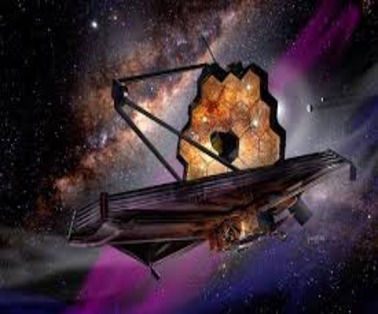The James Webb Space Telescope has captured a clear image of the planet Uranus and its rings.
Key Points On James Webb Space Telescope
- Uranus is a ringed planet like Saturn, Jupiter and Neptun
- Discovered in 1781, Uranus was the first planet found using a telescope
- Four times the size of Earth, ‘Ice Giant’ planet Uranus has 27 moons
- Uranus is an especially interesting target for X-ray observations because of the unusual orientations of its spin axis and its magnetic field.
- Uranus rotates on its side, with a roughly 90-degree angle from the plane of its orbit. This leads to extreme seasons and long periods of sunlight and darkness.
- Uranus is among only two planets in our solar system that rotate clockwise along with Venus.
- The planet takes 84 earth years to orbit the Sun.
- Uranus has 13 rings, with 11 visible in the image. Some of the rings are very bright and close together, appearing as a larger ring.
- In 1986, NASA’s Voyager 2 made the first – and so far, the only – visit to Uranus.
What Is The James Webb Space Telescope?
- The James Webb Space Telescope is the largest, most powerful infrared space telescope ever built.
- It is designed to complement and extend the discoveries of the previous Hubble Space Telescope
- It is valued at around $10 Billion USD.
- The telescope is the result of an international collaboration between NASA, the European Space Agency (ESA) and the Canadian Space Agency which was launched in December 2021.
- It is currently at a point in space known as the Sun-Earth L2 Lagrange point, approximately 1.5 million km beyond Earth’s orbit around the Sun.
Features Of James Webb Space Telescope

Objectives Of James Webb Space Telescope
- It will examine every phase of cosmic history: from the Big Bang to the formation of galaxies, stars, and planets to the evolution of our own Solar System.
- The goals for the Webb can be grouped into four themes.
- The first is to look back around 13.5 billion years to see the first stars and galaxies forming out of the darkness of the early universe.
- Second, to compare the faintest, earliest galaxies to today’s grand spirals and understand how galaxies assemble over billions of years.
- Third, to see where stars and planetary systems are being born.
- Fourth, to observe the atmospheres of extrasolar planets (beyond our solar system), and perhaps find the building blocks of life elsewhere in the universe.
Who is James Webb?
- The telescope is named after James E. Webb, the famous administrator of NASA from 1961-1968 under whose tenure the world saw the first lunar landing with Neil Armstrong and Buzz Aldrin as Apollo 11 program.
- He also oversaw critical missions like the Mercury and Gemini under President John F. Kennedy, Lyndon B. Johnson and has also worked with President Harry S. Truman.
Lagrange Points
- Lagrange points are positions in space where objects sent there tend to stay put.
- At Lagrange points, the gravitational pull of two large masses precisely equals the centripetal force required for a small object to move with them.
- These points in space can be used by spacecraft to reduce fuel consumption needed to remain in position.
- There are five Lagrange points from L1 to L5 for every given combination of two large orbital bodies.
- The first three Lagrange points L1, L2 and L3 were discovered by Leonhard Euler and L4 and L5 were discovered by Joseph-Louis.
- Of the five Lagrange points, three are unstable and two are stable.
- L1, L2 and L3 are unstable Lagrange points, and they lie along the line connecting the two large masses.
- L4 and L5 are stable Lagrange points and form they form the apex of two equilateral triangles that have large masses at their vertices.
To Download Monthly Current Affairs PDF Click here
Get Inspiration from CLAT 2025 Topper
Click here to get a free demo
Everything About CLAT 2025



